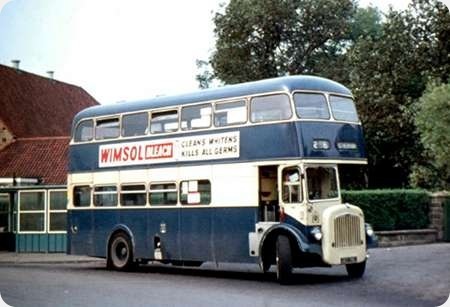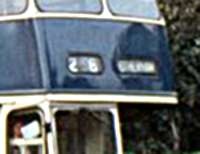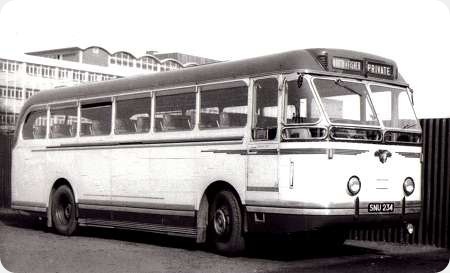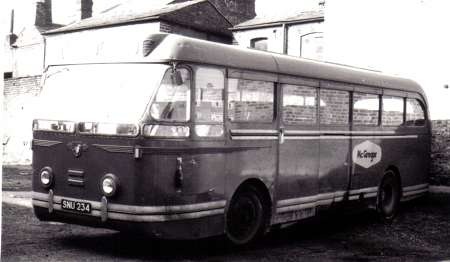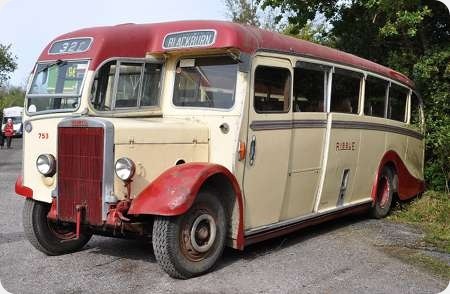Rotherham Corporation – Daimler CVG – CET 76C – 76
Rotherham Corporation
1965
Daimler CVG6LX
Roe H39/31F
It’s an August Sunday evening in 1967 at the Chapeltown terminus of the service from Rotherham. Huddersfield had batches of almost identical vehicles but these Rotherham ones were classy – they had hopper saloon windows! I never travelled on a Rotherham example but I hope they had more comfortable seats than the thin lightweight ones favoured by Huddersfield. As a bus, they were pretty indestructible in service although at 7 year recertification most had fractured rear body crossmembers. Enjoy the livery, swept away in the monolithic era of the PTE.
Photograph and Copy contributed by Ian Wild
19/02/15 – 15:57
Leeds City Transport also had a batch of five of these vehicles, two of which are preserved. I enjoyed a ride on one last autumn at the Skipton running day. The Leeds buses were bought specifically for a service which was operated jointly with Bradford Corporation, which used forward entrance vehicles. Leeds otherwise stuck to rear entrances until the advent of rear engined buses.
I have never worked on forward entrance half cabs, but I wonder if there really was an advantage, or was it a case of following fashion? I have heard tales of conductors not liking them because there is nowhere to stand out of the way at bus stops. Certainly from the point of view of lower deck passengers, forward entrance buses had very poor forward vision.
I’ve always liked Daimlers, and this one is enhanced by the "streamlined" livery. The service number blind looks odd, was there a large gap between the two digits?
Don McKeown
20/02/15 – 07:45
Don, Rotherham buses (certainly up to the mid 60s) always had the gap between the two numeral blinds. How could I have forgotten the similar Leeds Daimlers? Not only did I operate them at both Huddersfield and Halifax but 874 frequently operates the free Worth Valley Railway countryside tour service when the weather is unsuitable for the open top ex Southdown PD3.
Ian Wild
20/02/15 – 16:35
Derby also had separated digits to the route numbers – they even had completely separate apertures. Many Derby residents took this a bit literally. The no.11 to "Kedleston Road/Allestree Lane" often being referred to as a "one-one" rather than eleven.
Stephen Ford
22/02/15 – 07:53
Rotherham – Chapeltown was service 16, although I can’t make out what is actually being shown.
Geoff Kerr
22/02/15 – 07:53
Best I can do with what I have I’m afraid, I have sharpened it up a bit. Looks like route 2_6 to me.
Peter
22/02/15 – 14:02
My 1971 timetable and a photograph I took in 1970 at the same location both agree with Geoff, so unless the service had been renumbered the bus is showing the wrong number.
David Beilby
23/02/15 – 07:34
Leicester also had separate apertures for both numbers and a third for the destination.
Chris Hough
23/02/15 – 17:14
The 26 service was to Aston, on the other side of the town, so perhaps the driver has simply put the wrong digit up. The destination showing is ‘ROTHERHAM’, of course, which is what the corporation buses showed when working back towards town.
Dave Careless
Quick links to the - Comments Page - Contact Page - Home Page
